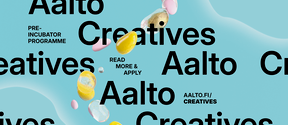SPICE promotes social cohesion by citizen curation of cultural heritage
SPICE is an EU-H2020 funded project dedicated to citizen curation of cultural heritage spanning over three years between May 2020 to April 2023. In basic terms, SPICE is an abbreviation for Social Cohesion, Participation and Inclusion through Cultural Heritage. H2020 (Horizon 2020) is an EU Framework Programme for Research and Innovation that provides funding to projects tackling societal challenges. Overall, the objective of SPICE is to support citizen curation through codesign with a diverse set of museums and communities.
There are five different case studies involving museums and citizen groups wherein codesign and evaluation of citizen curation activities will be implemented. The countries wherein these case studies occur are Finland, Ireland, Israel, Italy and Spain. The Finnish case study is carried out at the Design Museum Helsinki through a collaboration with Aalto University.
The targeted groups of the case study in Finland include senior citizens, rural communities and asylum seekers. A major aim of this case study is to enable these groups to engage as well as share different mechanisms through which their own artifacts, interpretations and narratives connect to Finnish culture. This will be implemented and supported using portable museums within virtual spaces such as virtual and augmented reality headsets. Eventually, sharing a variety of interpretations and stories is capable of instilling deeper understanding between several communities.
In addition to the case studies, there are nine different work packages (WP) responsible for dealing with research and development of citizen curation tools and methods. WP7 comprised of Lily Diaz, Leena Svinhufvud and Gautam Vishwanath is focused on co-design and evaluation of inclusive citizen curation tools as well as methods to support participation, social cohesion and research through case studies. This is done in a series of ways, namely:
-
Setting up evaluation protocols to monitor the progress and impact of case studies and citizen curation activities. An assessment will also be carried out from the point of view of physical and digital accessibility in order to support wider inclusion.
-
Devising a Sociotechnical system (STS) map that can accommodate complex organizational work between the social and technical side of the workspace in order to optimize the case studies and WPs.
-
Using a project management tool that also serves as a visualization tool to keep everyone involved informed, indicate workflows, understand convergence point and dependencies as well track the development and implementation of each case study and WP.
WP7 will be involved in monitoring the development of each case study and enabling them to make use of several human-centered methods such as scenario design, user-experience (UX) mapping, service design blueprints and more. These design methods help each case study in planning, prototyping, testing and iterating tools and activities promoting citizen curation. WP7 is also responsible for development of interpretation methodology through a combined use of artefact analysis and autoethnographic storytelling techniques. All partners work together on literature reviews, methods development and practices and user modelling. There are specific WPs devoted to linked data infrastructures, interface design, ontology development, technical systems integration, dissemination of results and ensuring ethical compliance.
Links to the Project:
Read more news

A new way to measure contagion: the gut bacterium behind blood poisoning can spread like influenza
Neither the antibiotic-resistant nor the highly virulent strains are the most transmissible.Tonmoy Saha Presents Textile Recycling Research at CIMANET Seminar
The CIMANET Research Seminar, held under the theme “Future Leaders in Circular Materials Bioeconomy,” took place on Thursday, December 4, at the Scandic Marina Congress Center in Helsinki.
Textile Chemistry Group Meeting Held
The Annual Meeting of The Textile Chemistry Group held on Thursday, December 11, uniting researchers, doctoral candidates, master’s students, and interns to present their advances in sustainable textile technologies.






